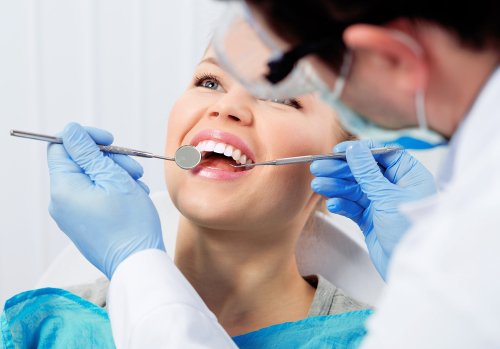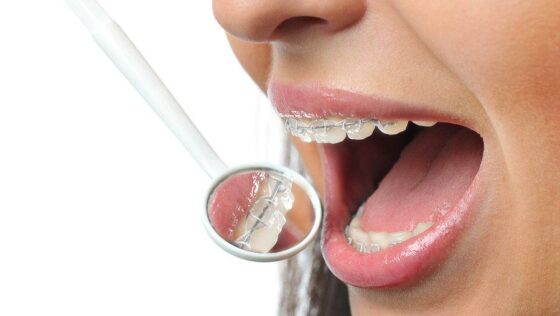Legacy Orthodontics Fundamentals Explained
Legacy Orthodontics Fundamentals Explained
Blog Article
Some Known Questions About Legacy Orthodontics.
Table of ContentsExamine This Report about Legacy OrthodonticsOur Legacy Orthodontics DiariesSome Known Facts About Legacy Orthodontics.Everything about Legacy OrthodonticsThe smart Trick of Legacy Orthodontics That Nobody is Discussing
In enhancement, we use adjustable treatment timetables, versatile payment alternatives and an enjoyable, pleasurable experience.An orthodontist is a dental practitioner trained to identify, protect against, and treat teeth and jaw irregularities. Orthodontists work with individuals of all ages, from kids to grownups.
Malocclusion, or misaligned teeth, can lead to dental problems, including tooth decay, periodontal disease, and tough or painful eating. Yet not every person is born with straight teeth. If you have a bad bite or huge rooms in between your teeth, you may wish to consult a dental practitioner concentrating on orthodontic treatment.
4 Easy Facts About Legacy Orthodontics Shown
( Picture Credit Report: DigitalVision/Getty Images) Orthodontists utilize taken care of and removable oral devices, like dental braces, retainers, and bands, to alter the position of teeth in your mouth. Orthodontic therapy is for dental irregularities, including: Uneven teethBite problems, like an overbite or an underbiteCrowded teeth or teeth that are also far apartJaw misalignmentThe goal of orthodontic treatment is to improve your bite.
While you may assume of orthodontists as mostly for kids or teenagers who require braces, they can correct oral problems at any kind of age. Orthodontists go to university, oral school, and orthodontic school.
, however not all dental professionals are orthodontists. They focus on two locations: Just how to properly and securely relocate teeth Exactly how to effectively assist advancement in the teeth, jaw, and faceOnce an orthodontist has finished training, they have the choice to come to be board certified.
Unknown Facts About Legacy Orthodontics
Misalignment, or malocclusion, is the most typical factor individuals see an orthodontist. It is hereditary and is the result of size differences between the upper and reduced jaw or in between the jaw and teeth. Malocclusion results in tooth congestion, a twisted jaw, or uneven bite patterns. Malocclusion is normally treated with: Your orthodontist connects metal, ceramic, or plastic square bonds to your teeth.
Some people need a headwear to help relocate teeth right into line with pressure from outside the mouth. A retainer is a customized device that maintains your teeth in location.
They can develop added area in the mouth without having to draw teeth. Orthodontists make use of cables, medical screws, or plates to sustain your jaw bone.
You might require to see an orthodontist if you have: Crowding or not adequate area for all of your teethOverbite, when your top teeth come by your bottom teethUnderbite, when your bottom teeth are as well much forwardSpacing or problems with gapsCrossbite, which is when your top teeth fit behind your base teeth when your mouth is closedOpen bite or an upright space in between your front base and top teethMisplaced midline, when the facility of your base and upper teeth do not line up Remedying an oral malocclusion can: Make attacking, eating, and speaking easierImprove the balance of our face and your total appearanceEase discomfort from temporomandibular joint problemsDifferent your teeth and make them simpler to cleanse, aiding protect against dental caries or tooth cavities It's often a dental practitioner that initially notices misaligned teeth throughout a regular test.
What Does Legacy Orthodontics Mean?

Throughout your very first orthodontic assessment, you'll likely have: An oral examPhotos taken of your face and smileDental X-raysPanoramic (360 level) X-rays of your face and headImpressions to produce mold and mildews of your teethThese examinations will certainly help your orthodontist recognize how to continue with your therapy. leesburg orthodontist. An orthodontist is a dentist who's had training to treat your teeth and jaw
Orthodontists may execute surgical procedure, exams,X-rays,and more to aid you obtain a much more comfy, much healthier smile. An orthodontist is focused on your bite, so something like a chipped tooth would be dealt with by a dental professional. Orthodontists are dental practitioners yet not all dental experts are orthodontists. Orthodontists are concentrated on your bite, or the method your teeth fit together, and the straightness of your teeth.
Ever wondered just how stars always appear to have flawlessly straightened teeth? The response often hinges on the competent hands of an orthodontist. Yet just what does an orthodontist do? Orthodontists are dental professionals who concentrate on correcting abnormalities in the teeth and jaws. Their competence surpasses simply producing an attractive smile; it includes enhancing your overall dental wellness and feature.
An Unbiased View of Legacy Orthodontics

While dental braces are one of the most generally recognized orthodontic therapy, orthodontists have a diverse toolkit at their disposal. The details strategy picked depends on the severity of the instance, the client's age, and individual preferences. These tried-and-true braces use a system of braces adhered to the teeth and connected by cables.
Clear aligners, like Invisalign, are a prominent option for patients looking for a more discreet therapy alternative. These detachable trays are more customized to gradually change the teeth's placement. Headwear might be made use of together with dental braces or aligners to apply extra targeted forces, specifically for fixing jaw inconsistencies. In situations of narrow jaws, palatal expanders can be utilized to produce space for appropriate tooth alignment.
Report this page